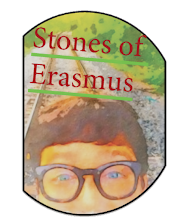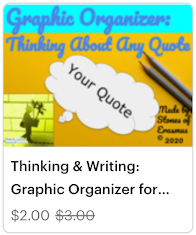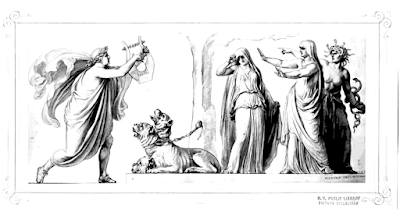Kickstart Your Greek Mythology Unit with a Free Homer Lesson!
Hello, fellow educators! My name is Greig, and I've been teaching English language arts and humanities for over 15 years. One of my favorite teaching strategies is frontloading units with engaging background lessons—and that's exactly why I've created this brand-new free lesson on Homer, the Blind Poet of Ancient Greece.
If you're gearing up to teach The Iliad and The Odyssey, you know how important — and sometimes tricky — it is to help students grasp the rich context behind these epic masterpieces. This freebie makes that task easy, interactive, and fun!
Why Teach Homer First?
Before diving into Achilles’ rage or Odysseus’ adventurous homecoming, it's crucial students understand a few big ideas:
- Who was Homer? We dive into the legendary poet's life (and the mysteries around him), illustrated beautifully with images, including Raphael’s famous fresco from the Vatican Museums.
- The "Homeric Question." Spark lively discussions with your students about the nature of authorship and oral storytelling in ancient cultures.
- Cultural & literary connections. How did Homer shape Greek mythology, moving from nature-spirits to fully-realized divine personalities like Zeus, Hera, and Aphrodite?
What You'll Get in This Free Resource
- 📚 Illustrated Reading Cards: Adapted from secondary sources to boost comprehension and engagement.
- 📅 Two-Day Lesson Pacing Guide: Detailed teacher notes and clear lesson structure.
- 🗺️ Anchor Chart: Easily print or digitally distribute, introducing key characters and concepts visually.
- ✍️ Interactive Task Cards & Question Bank: Use for trivia games, assessments, or engaging classroom discussions.
- 📝 Exit Tickets & Cornell Notes: Quick, effective assessments capturing student writing and insights in real-time.
- 🎨 Frayer Model Vocabulary Templates: Visual vocabulary instruction to deeply embed key terms.
- 🔖 Further Reading List & Answer Keys: Comprehensive teacher support included.
Seamlessly Digital & Printable
Whether your classroom is paper-based, digital, or blended, this lesson fits perfectly. You'll receive PDFs for easy printing and Google Slides and Easel Activities compatible with Google Classroom and other LMS platforms.
Standards-Aligned & Classroom-Tested
This resource aligns effortlessly with multiple standards:
- Citing textual evidence
- Determining central ideas and themes
- Mastering vocabulary in context
- Collaborative discussion skills
Perfect for ELA and humanities classrooms—grades 6 through 10, easily adaptable for advanced younger learners, too!
Ready to Dive In?
Get your students excited and curious about ancient Greek literature. This resource is completely free and ready for immediate download:
Download Now from Teachers Pay Teachers!
If you love this resource or have questions, please leave a comment, review, or reach out directly at support@stonesoferasmus.com.
Happy teaching and may your unit on Homer be truly epic!
— Greig from Stones of Erasmus




























